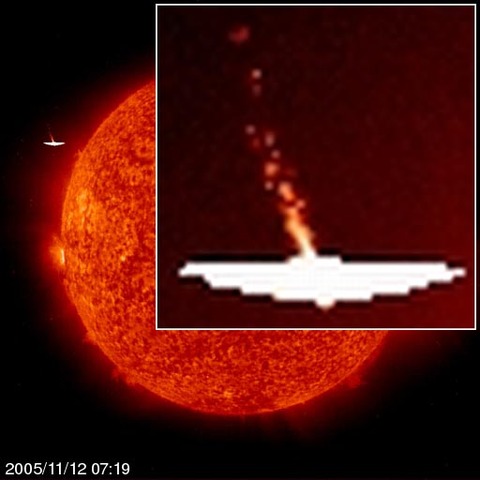
Anunnaki
This article is about the Sumerian gods. For the role-playing game character, see Demon: The Fallen. For The Anunnaki as depicted in The 12th Planet, see Zecharia Sitchin.
The Anunnaki (also transcribed as: Anunna, Anunnaku, Ananaki and other variations) are a group of deities in ancient Mesopotamian cultures (i.e., Sumerian, Akkadian, Assyrian and Babylonian). The name is variously written "da-nuna", "da-nuna-ke4-ne", or "da-nun-na", meaning something to the effect of "those of royal blood"[1] or 'princely offspring'.[2] Their relation to the group of gods known as the Igigi is unclear — at times the names are used synonymously but in the Atra-Hasis flood myth
the Igigi are the sixth generation of the Gods who have to work for the
Anunnaki, rebelling after 40 days and replaced by the creation of
humans.[3]Jeremy Black and Anthony Green offer a slightly different perspective on the Igigi and the Anunnaki, writing that "lgigu or Igigi is a term introduced in the Old Babylonian Period as a name for the (ten) "great gods". While it sometimes kept that sense in later periods, from Middle Assyrian and Babylonian times on it is generally used to refer to the gods of heaven collectively, just as the term Anunnakku (Anuna) was later used to refer to the gods of the underworld. In the Epic of Creation, it is said that there are 300 lgigu of heaven."[4]
The Anunnaki appear in the Babylonian creation myth, Enuma Elish.[5] In the late version magnifying Marduk, after the creation of mankind, Marduk divides the Anunnaki and assigns them to their proper stations, three hundred in heaven, three hundred on the earth. In gratitude, the Anunnaki, the "Great Gods", built Esagila, the splendid: "They raised high the head of Esagila equaling Apsu. Having built a stage-tower as high as Apsu, they set up in it an abode for Marduk, Enlil, Ea." Then they built their own shrines.
According to later Assyrian and Babylonian myth, the Anunnaki were the children of Anu and Ki, brother and sister gods, themselves the children of Anshar and Kishar (Skypivot and Earthpivot, the Celestial poles), who in turn were the children of Lahamu and Lahmu ("the muddy ones"), names given to the gatekeepers of the Abzu temple at Eridu, the site at which the creation was thought to have occurred. Finally, Lahamu and Lahmu were the children of Tiamat (Goddess of the Ocean) and Abzu (God of Fresh Water).
Nibiru (also transliterated Neberu, Nebiru) is a term in the Akkadian language, translating to "crossing" or "point of transition", especially of rivers[1], i.e. river crossings or ferry-boats. In Babylonian astronomy, nibiru (in cuneiform spelled dné-bé-ru or MULni-bi-rum) is a term of the highest point of the ecliptic, i.e. the point of summer solstice, and its associated constellation. The establishment of the nibiru point is described in tablet 5 of the creation epic Enûma Eliš"
As the highest point in the paths of the planets, nibiru was considered the seat of the summus deus who pastures the stars like sheep, in Babylon identified with Marduk. This interpretation of Marduk as the ruler of the cosmos suggesting an early monotheist tendency in Babylonian religion by various authors.[3][4]
The corresponding constellation was in the area of Libra. The Nibiru constellation rose in the month of Tišritum, around autumnal equinox, and Nibiru was also a name for the planet Jupiter[5] when observed in the month of Tišritum.
In the enumerations, Nibiru is mentioned at different astronomical locations in conjunction with the positions of stars and planets,[2] mostly as the "star of Marduk", as in the Enuma Elish: "Nibiru is [Marduk's] star, which he made appear in the heavens . . . [130-131] The stars of heaven, let him [Nibiru] set their course; let him shepherd all the gods like sheep."[6]
The various stars or planets were not subject to any fixed interpretation. The "star of Ea", for example, was described at various "revelation spots" including Vela, Fomalhaut, and Venus. Similar interpretations were made for the other "stars of the gods", so certain celestial coordinates where the "stars of the gods" appeared must be considered.[2]
Nibiru is described more closely on a complete cuneiform tablet:[7]
Böhl calls the text "objectively the most difficult passage, although it has been handed down in its entirety. The Nibiru tablet does not provide any essential help for the clarification."[8]Nibiru, which is said to have occupied the passageways of heaven and earth, because everyone above and below asks Nibiru if they cannot find the passage. Nibiru is Marduk's star which the gods in heaven caused to be visible. Nibiru stands as a post at the turning point. The others say of Nibiru the post: "The one who crosses the middle of the sea (Tiamat) without calm, may his name be Nibiru, for he takes up the center of it". The path of the stars of the sky should be kept unchanged.
In the MUL.APIN, Nibiru is identified as Jupiter:
- "When the stars of Enlil have been finished, one big star – although its light is dim – divides the sky in half and stands there: that is, the star of Marduk (MUL dAMAR.UD), Nibiru (né-bé-ru), Jupiter (MULSAG.ME.GAR); it keeps changing its position and crosses the sky."











No comments